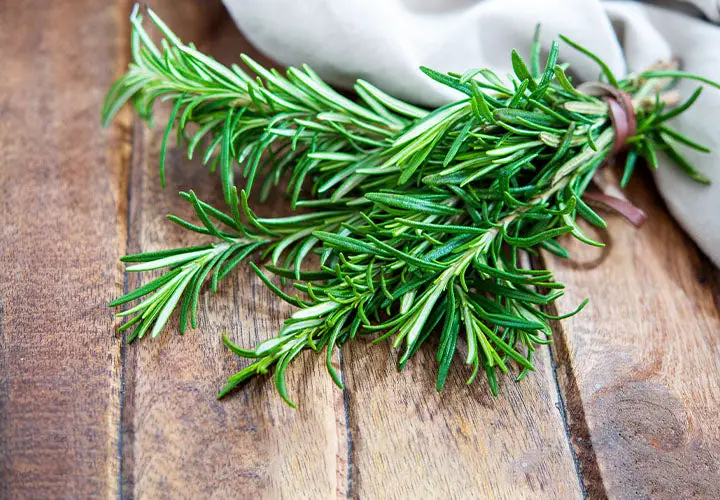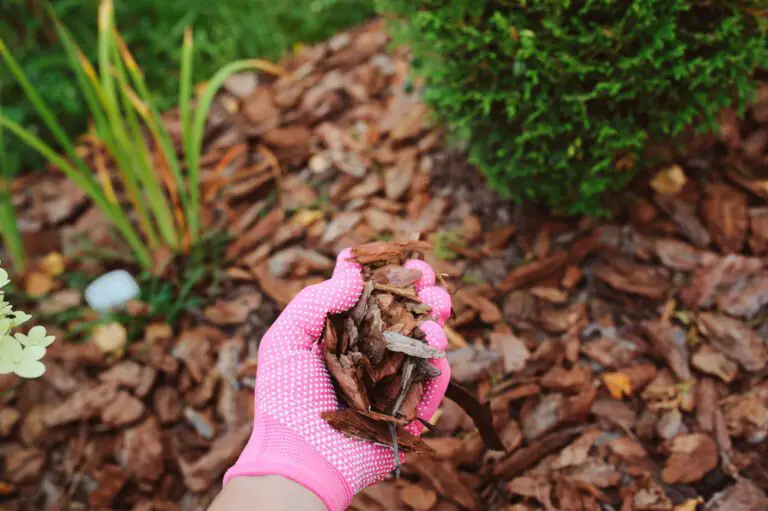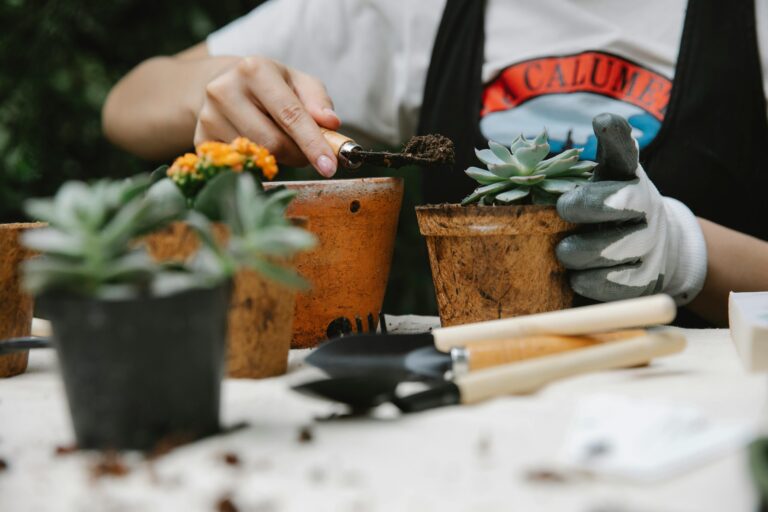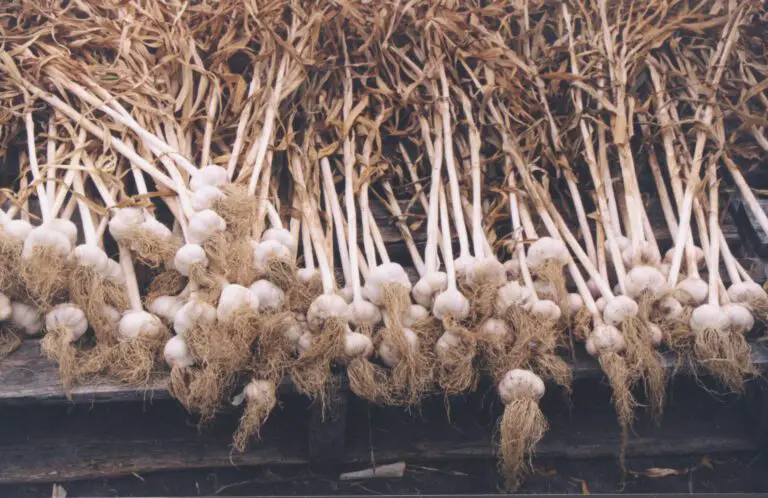Crabgrass No More! Your Ultimate Weed Warrior Guide
Table of Contents
I. Introduction to Crabgrass
Crabgrass is a common nuisance that many gardeners and homeowners encounter in their lawns and gardens. Also known as Digitaria sanguinalis, this annual grassy weed can quickly take over your carefully manicured turf, choking out desirable grasses and plants. Understanding the characteristics and behaviors of crabgrass is essential in effectively managing and preventing its growth.
One of the key features of crabgrass is its ability to thrive in a wide range of environments. This weed is adaptable to various soil types, including sandy, loamy, and clay soils, and can withstand both drought and high temperatures. Additionally, its rapid growth rate allows it to outcompete slower-growing turfgrass varieties. These combined factors make crabgrass a resilient and pervasive weed that requires proactive measures for control. In the following sections, we will explore how to identify crabgrass, its life cycle, and the impact it can have on your lawn and garden. We will also discuss strategies for preventing and managing a crabgrass infestation, including mowing techniques, watering strategies, soil health, and the use of chemical and organic control methods. Stay tuned as we dive deeper into combatting crabgrass and maintaining a lush, pristine lawn!
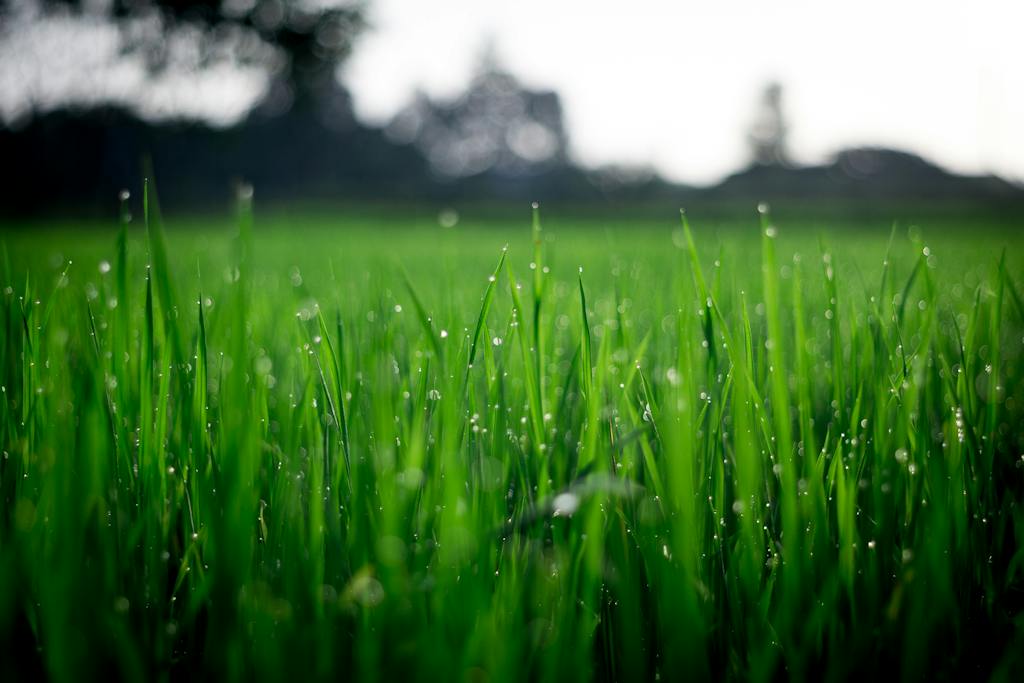
2. Identifying Crabgrass: How to Distinguish It from Other Weeds
Crabgrass is a common weed that can easily infiltrate and dominate your lawn if left unchecked. To effectively combat it, it’s crucial to be able to distinguish crabgrass from other weeds that may be present in your garden.
One key characteristic of crabgrass is its low-growing and spreading nature. Unlike other weeds that tend to grow upward, crabgrass sprawls along the ground, sending out its infamous flat stems, known as stolons. These stolons enable crabgrass to form dense mats, smothering out desirable plants in your lawn. Additionally, crabgrass leaves are narrow and pointed, resembling the shape of crab legs, hence its name.
Another helpful clue to identifying crabgrass is its distinctive seed head or “inflorescence.” In late summer or early fall, small finger-like structures called “spikes” or “racemes” emerge from the center of the plant. These seed heads can range in color from whitish-green to purplish-brown. Being able to identify these unique features will allow you to effectively target and eliminate crabgrass from your garden.
3. The Life Cycle of Crabgrass: When and How It Grows
Crabgrass, scientifically known as Digitaria sanguinalis, is an annual grass weed that can cause havoc in lawns and gardens if not properly managed. Understanding the life cycle of this tenacious weed is crucial for effective control.
The life cycle of crabgrass starts in the spring when the soil temperature reaches around 55 to 60 degrees Fahrenheit (13 to 16 degrees Celsius). At this point, crabgrass seeds germinate, and tiny plants begin to emerge. These plants grow rapidly, spreading wide and low to the ground. By early summer, crabgrass reaches its peak growth, forming dense patches that can smother desirable grasses and plants in the process.
Throughout the summer, crabgrass continues to develop, producing clusters of seed heads. Each seed head can contain hundreds of seeds, ensuring the weed’s future presence. As temperatures cool in the fall, crabgrass plants start to decline, turning brown and eventually dying off with the arrival of frost. However, this doesn’t mark the end of the cycle. The dormant seeds remain embedded in the soil, ready to germinate again in the following spring, perpetuating the cycle of crabgrass growth year after year.
| Stage | Description |
|---|---|
| Germination | Crabgrass seeds germinate in late spring or early summer. |
| Seedling | Seedlings emerge and grow rapidly in warm temperatures. |
| Growth | Crabgrass continues to grow throughout the summer months. |
| Flowering | Crabgrass produces seed heads in late summer to fall. |
| Seed Production | Seeds are dispersed in late fall or early winter. |
| Dormancy | Seeds lie dormant during the winter months. |
4. The Impact of Crabgrass on Your Lawn and Garden
Crabgrass is notorious for its detrimental impact on lawns and gardens. This resilient weed can quickly take over and dominate the landscape, outcompeting desirable plants and stifling their growth. Its aggressive nature allows it to form dense mats, crowding out other vegetation and creating an unsightly appearance in what was once a lush and vibrant garden.
One of the most significant consequences of crabgrass infestation is the depletion of valuable resources. As this weed thrives vigorously, it competes with neighboring plants for essential nutrients, water, and sunlight. This competition often leads to stunted growth and reduced vigor in desirable plants, diminishing their overall health and appearance. Additionally, crabgrass can create an uneven surface in lawns, making it difficult to achieve an aesthetically pleasing and functional landscape. The presence of crabgrass can also undermine the efforts of gardeners and homeowners, who invest time and energy into nurturing their lawns and gardens, only to be disappointed by the invasion of this persistent and invasive weed.
5. Environmental Factors That Encourage Crabgrass Growth
Environmental Factors That Encourage Crabgrass Growth
Crabgrass, an unwelcome intruder in many lawns and gardens, thrives under specific environmental conditions. Understanding these factors can help you take proactive measures to prevent its growth and maintain a healthy lawn.
Firstly, crabgrass thrives in areas with high levels of sunlight. This weed is known for its ability to outcompete other plants in open, sunny areas, making it particularly problematic in lawns with sparse or patchy grass coverage. Additionally, crabgrass tends to establish itself in areas where the soil is dry and compacted. As a result, lawns lacking adequate irrigation or with poor drainage can provide the ideal breeding ground for this resilient weed to take hold.
To make matters worse, crabgrass is known to be resilient to many environmental stresses, such as extreme temperatures and drought conditions. It is important to note that while a well-maintained lawn with healthy, thick grass can naturally discourage crabgrass growth, certain environmental factors can tip the scales in favor of this invasive weed. Therefore, being aware of these factors and implementing preventive measures will be crucial in keeping crabgrass at bay.
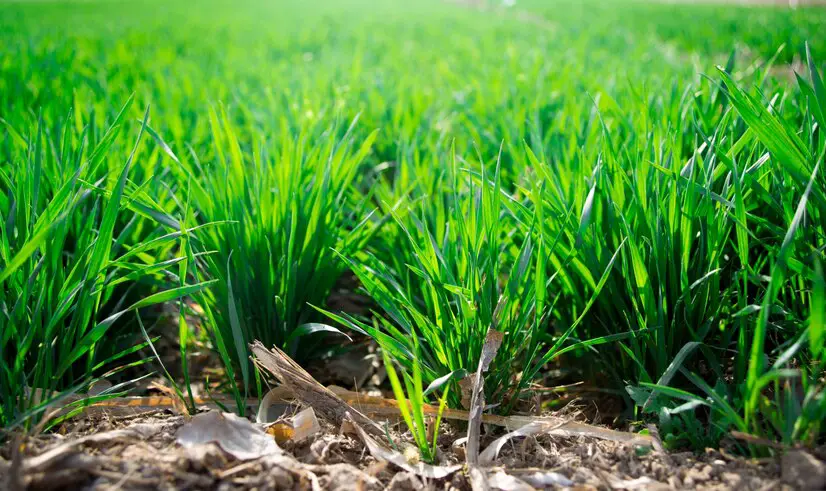
6. Preemptive Measures: Preventing Crabgrass Infestation
Preventing crabgrass infestation requires a proactive approach and the implementation of strategic measures. One of the key preemptive measures is to maintain a healthy and dense turfgrass that can effectively outcompete the growth of crabgrass. To achieve this, it is important to provide your lawn with adequate nutrition through proper fertilization. By following a well-balanced fertilization schedule, you can ensure that your lawn receives the necessary nutrients to thrive, while also enhancing its ability to resist crabgrass invasion.
Another effective preemptive measure is proper mowing technique. Regular and frequent mowing helps to keep your lawn at the optimal height, which discourages the growth and establishment of crabgrass. However, it is crucial to avoid cutting the grass too short, as this can weaken the turf and create an opportunity for crabgrass to take hold. Aim to mow your lawn at the recommended cutting height for your specific grass type, ensuring that no more than one-third of the grass blade is removed at a time. Additionally, remember to always use sharp blades to achieve clean cuts and minimize stress on the grass plants.
7. Mowing Techniques: Best Practices to Combat Crabgrass
Mowing plays a crucial role in maintaining a beautiful and crabgrass-free lawn. To combat crabgrass effectively, it is important to follow best practices when it comes to mowing techniques. First and foremost, it is essential to ensure that your lawn mower blades are sharp. Dull blades can tear and weaken the grass, making it more susceptible to crabgrass invasion. Sharpen your blades regularly or, if necessary, replace them to ensure a clean and precise cut.
When it comes to the height at which you mow your lawn, it is recommended to keep it at a height of around 2.5 to 3 inches. Tall grass shades the soil, preventing sunlight from reaching the soil’s surface, which inhibits crabgrass germination. Additionally, longer grass shades and suppresses existing crabgrass, making it difficult for it to thrive. However, be cautious not to let your lawn become too tall, as excessively long grass can lead to other issues such as thatch buildup or increased susceptibility to certain diseases. Striking the right balance is key.
8. Watering Strategies: Optimal Moisture Levels for Crabgrass Control
Proper watering strategies are essential when it comes to controlling crabgrass in your lawn. Optimal moisture levels can help prevent the growth and spread of this persistent weed. To ensure effective crabgrass control, it is important to understand the watering needs of your lawn and how to maintain the right moisture balance.
Crabgrass thrives in moist conditions, so it is crucial to avoid overwatering your lawn. Excessive watering not only promotes crabgrass growth but also weakens the grass, making it more susceptible to weed invasion. Aim to provide deep and infrequent watering sessions rather than frequent shallow watering. This allows the grass roots to penetrate deeper into the soil, creating a stronger and healthier lawn that can resist crabgrass and other weeds.
On the other hand, under watering can also have adverse effects on your lawn’s ability to combat crabgrass. Insufficient moisture can stress the grass, leading to thinning and patchiness, which provides an opportunity for crabgrass to take hold. Therefore, it is vital to strike a balance by regularly monitoring the moisture levels of your soil and adjusting your watering schedule accordingly. By maintaining optimal moisture levels, you can create an environment that supports the growth of healthy turf grass, making it more difficult for crabgrass to infiltrate.
| Watering Strategy | Optimal Moisture Level for Crabgrass Control |
|---|---|
| Deep Watering | Keep soil consistently moist, but not soggy |
| Infrequent Watering | Allow soil to dry slightly between waterings |
| Water Early in the Day | Ensure soil has time to dry before evening |
| Use Drip Irrigation | Target water directly to plant roots |
| Mulching | Helps retain soil moisture and suppress weeds |
9. Soil Health and Fertilization: Nurturing Your Lawn to Resist Crabgrass
Soil health and fertilization play a crucial role in nurturing your lawn to resist crabgrass. By ensuring that your soil is in optimal condition, you create an environment that discourages the growth of this invasive weed.
One key aspect of maintaining soil health is to conduct regular soil tests. These tests provide important information about the nutrient levels and pH of your soil, allowing you to make informed decisions about fertilization. Based on the test results, you can select the appropriate fertilizers and amendments to address any deficiencies and create a balanced nutrient profile in your soil. Applying fertilizers at the right time and in the right amounts not only promotes the overall health of your lawn, but also strengthens its resistance against crabgrass and other weeds.
10. Chemical Control Methods: Herbicides for Effective Crabgrass Removal
Chemical control methods, specifically the use of herbicides, have proven to be highly effective in removing crabgrass from lawns and gardens. When selecting a herbicide for crabgrass removal, it is crucial to choose one that is specifically labeled for this purpose and safe for use on your type of turf.
One commonly used herbicide for crabgrass control is a post-emergent herbicide containing active ingredients such as quinclorac or fenoxaprop-p-ethyl. These herbicides work by targeting and killing actively growing crabgrass plants. It is important to apply these herbicides when the crabgrass is at its most vulnerable stage, typically in the early stages of growth. Applying herbicides during this time increases the likelihood of successful eradication, as crabgrass is more susceptible to these chemicals when it is actively growing.
It is important to follow the label instructions carefully when using herbicides for crabgrass removal. Over-application or incorrect application can lead to damage to your desired grass and other plants. Adhering to the recommended dosage and application frequency will ensure optimal results and minimize the potential negative impact on your lawn or garden. Additionally, it is recommended to wear protective clothing, such as gloves and goggles, to prevent any accidental contact with the herbicide during application.
Keep in mind that herbicides should be used as part of an integrated approach to crabgrass control. While they can effectively remove existing crabgrass, it is equally important to implement preventive measures to minimize future infestations. This may include maintaining proper lawn care practices such as regular mowing, proper watering, and soil health management. Combining chemical control methods with other preventive measures will help to ensure a crabgrass-free lawn or garden.
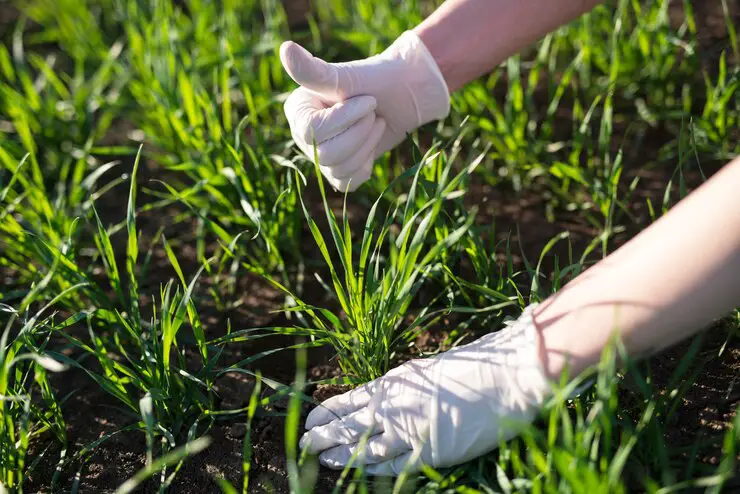
11. Organic Alternatives: Natural Remedies to Combat Crabgrass
Organic alternatives can be an effective and environmentally-friendly approach to combat and prevent crabgrass infestation. By utilizing natural remedies, you can maintain a healthy lawn while reducing the need for harsh chemicals. Here are some proven organic methods to help you tackle crabgrass:
1. Hand-Pulling: A tried-and-true method for removing crabgrass is to manually pull it from the roots. Ensure that you remove the entire plant, including its root system, to prevent regrowth. Be diligent and consistent in your efforts, especially during crabgrass’s early growth stages, as it can quickly spread and reproduce.
2. Corn Gluten Meal: A natural pre-emergent herbicide, corn gluten meal, acts by inhibiting the germination of crabgrass seeds. This organic alternative not only reduces weed growth but also adds nutrients to the soil. Apply it in early spring before soil temperatures reach 55°F (13°C) and in fall to further inhibit crabgrass growth. Keep in mind that corn gluten meal may affect desired seed germination, so avoid using it in areas where you plan to sow new grass seeds.
12. Timing Is Key: When to Apply Crabgrass Control Methods
Timing is crucial when it comes to applying crabgrass control methods. To effectively combat this invasive weed, it is essential to understand the life cycle of crabgrass and apply preventative measures at the appropriate times.
Crabgrass typically begins to germinate when soil temperatures reach around 55 to 60 degrees Fahrenheit (12 to 15 degrees Celsius) consistently. This usually occurs in the early spring, after the last frost has passed. Therefore, the best time to apply pre-emergent herbicides, which prevent crabgrass seeds from sprouting, is before the soil temperature reaches this critical threshold.
Timing is also important for post-emergent crabgrass control. It is recommended to apply post-emergent herbicides when crabgrass is actively growing, preferably during its early stages. This is when the weed is most vulnerable to herbicidal treatments. Applying herbicides during this time ensures maximum effectiveness in controlling the growth and spread of crabgrass.
By understanding the life cycle of crabgrass and applying the appropriate control methods at the right time, gardeners can effectively manage and prevent crabgrass infestations in their lawns and gardens.
13. Patching and Repairing: Restoring Your Lawn After Crabgrass Infestation
After successfully eliminating crabgrass from your lawn, it’s time to shift your focus to restoring its health and appearance. While crabgrass can leave unsightly patches in your lawn, with the right approach, you can replenish and rejuvenate your turf. Patching and repairing your lawn after a crabgrass infestation requires a combination of reseeding or sodding, soil amendments, and proper maintenance practices.
To begin the restoration process, address any bare spots or damaged areas in your lawn by reseeding or sodding. Reseeding involves spreading grass seed over the affected areas, while sodding entails replacing the damaged sections with rolls or squares of mature lawn. Both methods require careful preparation of the soil, ensuring it is loose, free from debris, and adequately watered.
Once the bare spots have been addressed, it’s essential to amend the soil to promote healthy growth. Conduct a soil test to determine its pH level and nutrient composition. Based on the results, you may need to add fertilizer or soil amendments such as compost or organic matter to replenish the soil’s nutrients and improve its structure.
In addition to addressing soil health, regular watering, mowing, and maintenance practices are crucial in restoring your lawn’s vitality. Adequate moisture is essential for seed germination and establishment, so ensure the repaired areas remain consistently moist but not overly saturated. Set your mower at the recommended height for your grass type and avoid cutting it too short, as this can stress the plants and hinder their growth.
By following these steps and diligently maintaining your lawn, you can restore its appearance and prevent future crabgrass infestations. The key is to provide the optimal conditions for your grass to thrive, promoting a lush and healthy lawn that is resilient against crabgrass and other weeds. Remember, consistency and proper care are vital in achieving long-term success in your lawn restoration efforts.
• Reseed or sod damaged areas in your lawn to address bare spots
• Prepare the soil by ensuring it is loose, free from debris, and adequately watered
• Conduct a soil test to determine pH level and nutrient composition
• Add fertilizer or soil amendments such as compost or organic matter based on test results
• Regularly water repaired areas to promote seed germination and establishment
• Set mower at recommended height for grass type and avoid cutting too short
• Consistently maintain your lawn to prevent future crabgrass infestations
• Provide optimal conditions for grass growth to promote a lush and healthy lawn.
14. Continuous Vigilance: Maintaining a Crabgrass-Free Lawn Year-Round
Maintaining a crabgrass-free lawn year-round requires continuous vigilance and adherence to effective lawn care practices. Regular monitoring and proactive measures are essential to prevent the growth and spread of this persistent weed. One of the key strategies for maintaining a crabgrass-free lawn is to ensure proper mowing techniques. By setting your mower at the recommended height for your grass type and regularly mowing to the appropriate height, you can help prevent crabgrass from invading your lawn. Pro tip: Never remove more than one-third of the grass height in a single mowing session, as this can stress the grass and create opportunities for crabgrass to thrive.
In addition to mowing, proper watering strategies play a vital role in keeping crabgrass at bay. It is important to provide your lawn with adequate moisture, but avoid overwatering, as excessive moisture can create favorable conditions for crabgrass growth. Water your lawn deeply and infrequently, ensuring that you reach the root zone while allowing the top inch of soil to dry out in between waterings. By maintaining optimal moisture levels, you can help promote the healthy growth of your desired grass species while making your lawn less attractive to crabgrass.
15. Seeking Professional Help: When to Consult a Lawn Care Expert
Seeking Professional Help: When to Consult a Lawn Care Expert
Maintaining a lush and healthy lawn requires continuous effort and expertise. While many home gardeners enjoy the satisfaction of tending to their own lawns, there are situations when seeking the assistance of a lawn care expert becomes necessary. These professionals possess specialized knowledge and experience in dealing with various lawn-related challenges, including the control of stubborn weeds such as crabgrass.
One important factor to consider is the extent of the crabgrass infestation in your lawn. If you notice a few isolated patches of crabgrass that can be easily controlled with basic herbicides or manual removal, you may be able to tackle the issue yourself. However, if your entire lawn seems overrun with crabgrass and other weeds, it may be time to consult a lawn care expert. Their expertise can help identify the underlying causes of the infestation and implement comprehensive strategies to effectively eradicate the problem. Additionally, a professional’s guidance is invaluable in determining the most suitable herbicides and application methods, avoiding any potential harm to other plants or the environment.
What are the signs that indicate I should consult a lawn care expert?
If you have followed all the preventive measures and applied control methods but still struggle with crabgrass infestation, it may be time to seek professional help. Additionally, if you are unsure about the identification of crabgrass or need guidance on lawn maintenance, consulting a lawn care expert can provide valuable insights.
Can a lawn care expert help me in maintaining a crabgrass-free lawn year-round?
Yes, a lawn care expert can assist you in maintaining a crabgrass-free lawn year-round. They have the knowledge and expertise to develop a comprehensive lawn care plan, including regular mowing techniques, watering strategies, and soil health maintenance, which are essential in preventing crabgrass growth.
How can a lawn care expert help in restoring my lawn after crabgrass infestation?
A lawn care expert can evaluate the extent of the crabgrass infestation and recommend appropriate patching and repairing methods. They can guide you on reseeding or sodding damaged areas, implementing proper fertilization techniques, and providing ongoing maintenance to restore your lawn to its healthy state.
Are there organic alternatives to chemical control methods for combating crabgrass?
Yes, there are natural remedies that can be used as alternatives to chemical control methods for crabgrass. A lawn care expert can suggest organic herbicides, such as vinegar or corn gluten meal, which can effectively inhibit crabgrass growth without the use of harsh chemicals.
When should I consult a lawn care expert for crabgrass control?
It is advisable to consult a lawn care expert when you are experiencing persistent crabgrass infestation despite your own efforts. Additionally, if you are unsure about the best practices for lawn care, seeking professional help can provide you with the necessary guidance and expertise to effectively combat crabgrass.

Ankit Garg is a seasoned writer at South El Monte Hydroponics, blending his passion for agriculture with a penchant for storytelling. With a degree in Agricultural Sciences from a prestigious institution, Ankit’s expertise lies in hydroponics, sustainable farming, and innovative cultivation techniques. His keen interest in exploring the intersection of technology and agriculture has led him to delve deep into the realm of hydroponic farming, where he thrives in uncovering the latest advancements and sharing insights through his engaging prose. Ankit’s dedication to promoting eco-friendly and efficient farming practices through his writing has earned him recognition within the agricultural community and beyond.


